Say Goodbye to Legacy MDM and Hello to Reltio to Power Connected Customer Experiences

It’s so exciting to be working with data innovators at Global 2000 companies with visionary leadership teams who are committed to winning in the experience economy.
I remember reading Gartner prediction that by 2020, 86% of companies will be competing on customer experience. How accurate was that prediction?
Well, 93% of CEOs and executives say improving the customer experience is one of their organization’s top 3 priorities in the next two years. Check out this post by CX futurist and author Blake Morgan: 20 Stats Tying CEO Involvement To Customer Experience Success. Successful transformations are driven by strong leadership. But leadership alone isn’t enough.
Competing on Customer Experience is Extremely Challenging for the Global 2000
Driving the transformation of a multinational company is extremely challenging. Check out the stats from Forrester below. It’s not only difficult to compete on customer experience, but it’s difficult to comply with customer data regulations, and to shift to a digital business.
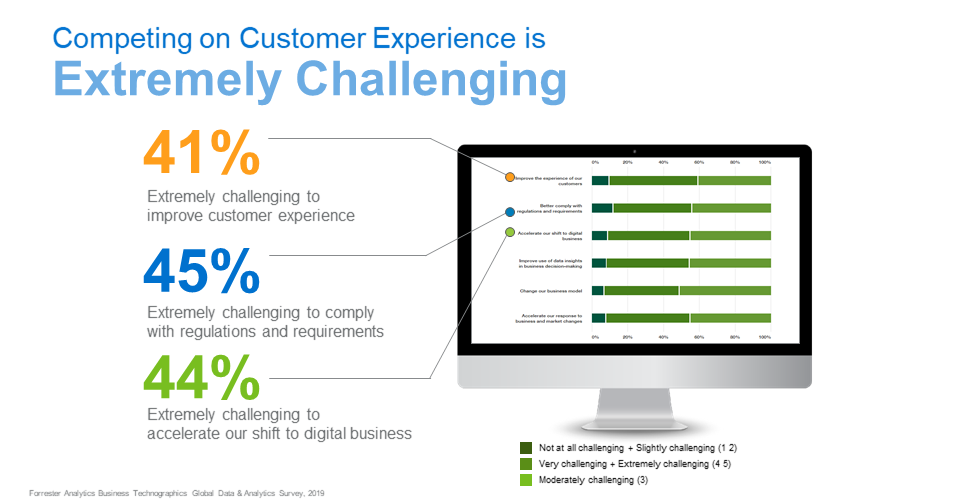
Data Challenges Hold Companies Back from Thriving in the Experience Economy
While there’s a lot of great strategy work happening to improve customer experience, often it’s happening in silos. And, there’s usually a huge, gaping hole in that strategy: customer data. Check out this global survey on personalization by BCG. The top reasons why CX and personalization initiatives stall are: Poor data centralization, inadequate real-time data feeds, poor data quality, and a lack of certain types of data.
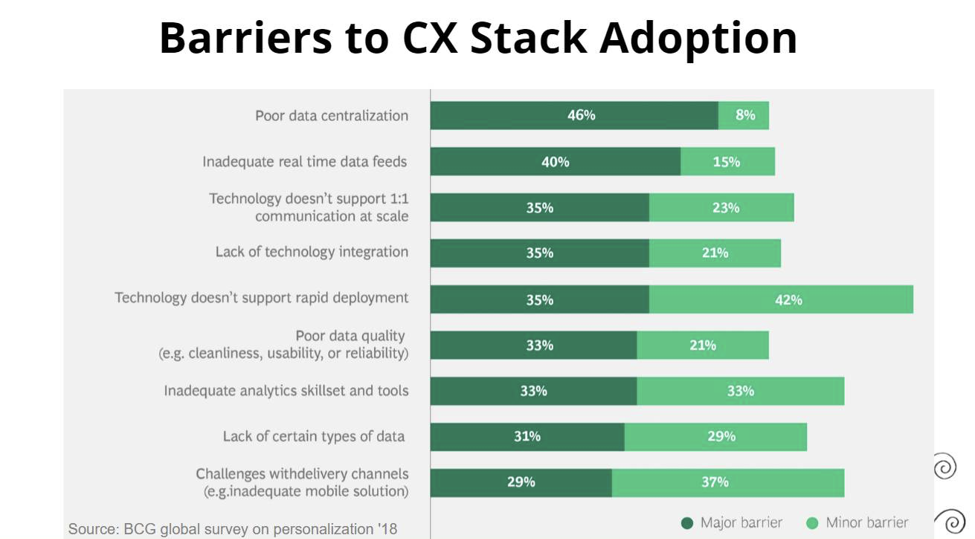
Disconnected Customer Data Leads to Disconnected Customer Experiences
In a nutshell, disjointed, disconnected, and outdated customer information is holding companies back from delivering winning customer experiences. As Blake Morgan shared with us, “It only takes one bad experience to alienate employees and customers. In many cases, those bad experiences come down to faulty technology and a lack of data. On the flip side, companies that use technology to provide amazing, data-driven experiences have great success. Research from Adobe found that businesses that invest in technology transformations and focus on experience have an average annual revenue growth rate of 15% compared to 11% for other companies. Those investments in customer data and technology clearly pay off.
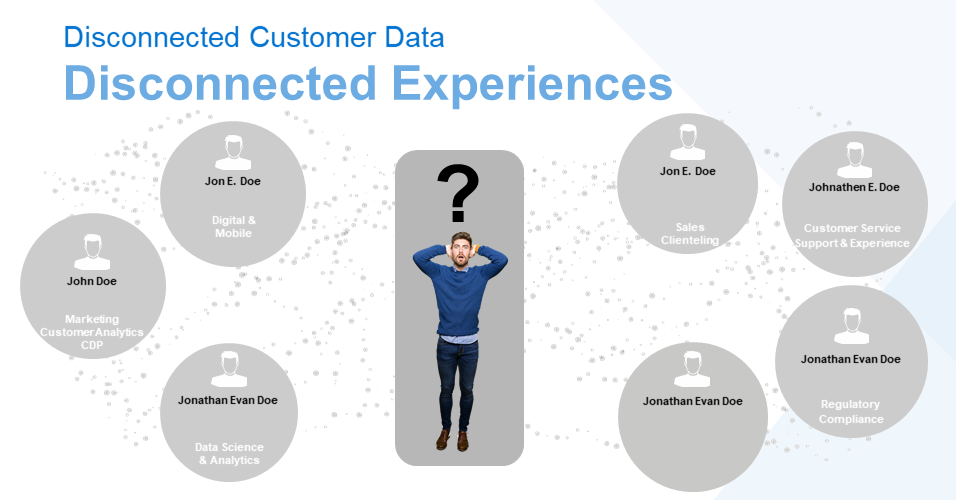
The 3 Critical Data Investments Needed to Compete in the Experience Economy
So what investments are data innovators at Global 2000 companies making to address these challenges? Check out the Forrester stats below that highlight three critical data investments that are happening in the next 12 months. Building a data innovation capability is important. So is having a complete view of the customer across channels. Without that, customer experiences are disconnected and it will be extremely difficult to power any initiatives to drive hyper-personalization in real-time at scale. And, to complicate the situation, they need to figure out how to comply with emerging privacy laws and security needs.
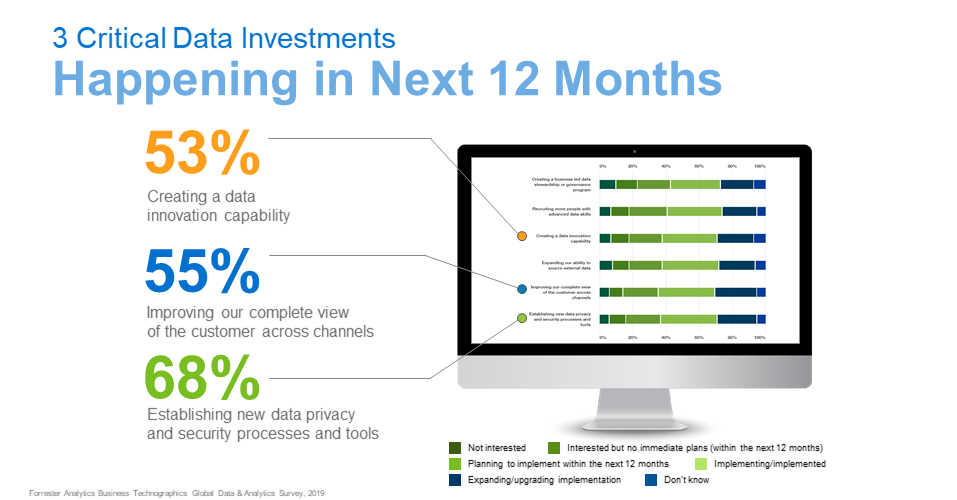
Connected Customer Data is at the Heart of Winning in the Experience Economy
I think Blake Morgan said it best, “Customer experience is often the deciding factor in where a customer does business. Instead of a one-size-fits-all solution, customers want products and services that are tailored to their needs. Many companies that are continually recognized for their amazing customer experiences have mastered customer data. Personalized, amazing experiences are based in data.”
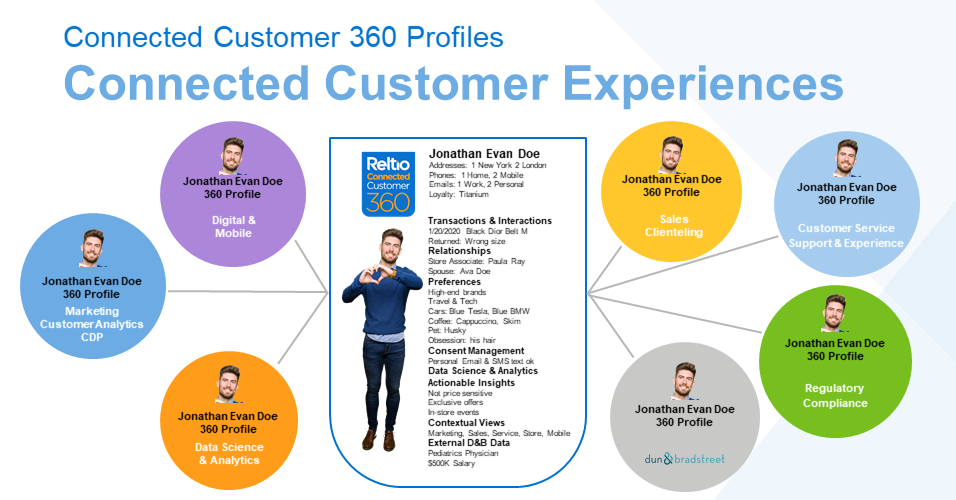
Why You Should Say Goodbye to Legacy Master Data Management (MDM)
The data innovators we work with play a lead role in their company’s transformation. In speaking with their leadership teams and stakeholders in digital and marketing, sales, customer service, loyalty and customer experience, compliance and data science and customer analytics, they quickly learned that business needs for customer data has grown exponentially. Well beyond what the legacy MDM systems they implemented 5 years ago were designed to deliver. And, they couldn’t afford to be held back. Check out the chart below.
The data innovators that work with Reltio don’t want to be held back by legacy master data management (MDM) systems that are too slow, constrained and rigid to deliver.
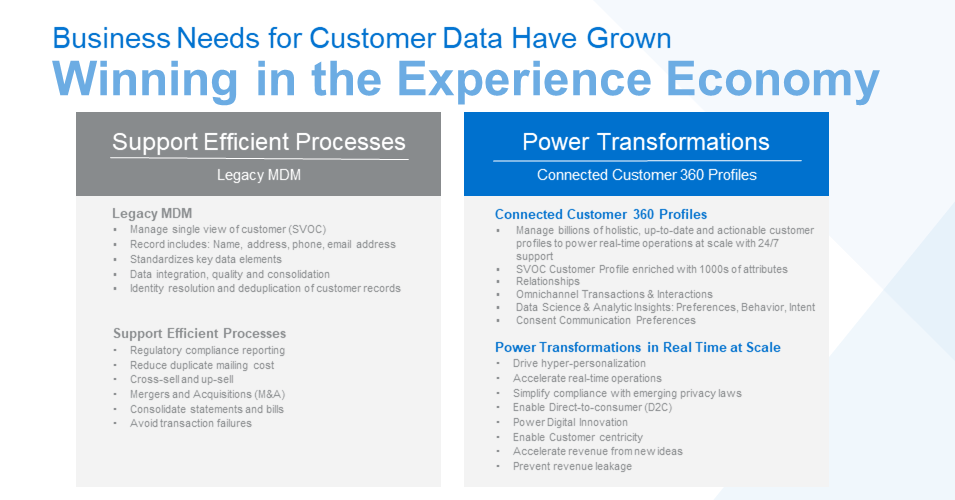
One example of a data innovator who said goodbye to a legacy MDM Platform Leader in the Gartner Magic Quadrant for Master Data Management Solutions, 2020 and hello to Reltio is the Information Operations leader at a top 10 insurance company. He and his team spent $300,000 and 9 months upgrading their legacy master data management (MDM) system. After spending all that money and time, they were unable to deliver any new business value to their stakeholders. They realized they needed to find a master data management system that’s designed to power their transformation, power their direct-to-consumer model, their digital and customer experience initiatives, while simplifying compliance with privacy laws, consent and communication preferences.
Another example is a top 10 life sciences company that is accelerating innovation to deliver life-changing medicines and personalized experiences, while respecting communication preferences and privacy compliance. “At AstraZeneca, we’re in the final year of a 3-year transformation to master, track and optimize the use of customer and product data throughout the organization to improve overall business process. We’re replacing 67 legacy master data management (MDM) systems with 3 interlinked regional hubs in Europe, APAC and the US,” said Joanna Walker, Global MDM Architect, AstraZeneca.
What does a master data management system do?
The goal of the Legacy MDM system is to create a single customer view (SVOC). It uses data integration, data quality and consolidation to standardize key data elements such as first name, last name, mailing address phone and email address. The goal with a MDM system is to support efficient processes and avoid transaction failures.
A single customer view is valuable, but not sufficient to power transformations in real time at scale. For that, you need more than an MDM system.
What do connected customer 360 profiles do?
The goal is to manage billions of holistic up-to-date, and actionable customer profiles to power real-time operations at scale with 24/7 support out of the box. It starts with a single view of the customer (SVOC), but that’s only the beginning.
Connected Customer 360 Profiles are enriched with 1000s of attributes including:
- Relationships: among B2C and B2B customers, between customers and employees (eg. store associates, brokers, agents, reps, CSMs, etc), products and locations
- Omnichannel Transactions and Interactions including functions, channels brands and geographies
- Actionable Insights from Data Science and Analytics including preferences, behavior and intent
- Consent & Communication Preferences by brand, channel or topic of interest
Connected Customer 360 Profiles are managed in a highly secure and compliant cloud-native SaaS data platform with disruption free upgrades. A Customer Success Manager (CSM) works with you to achieve business value milestones.
